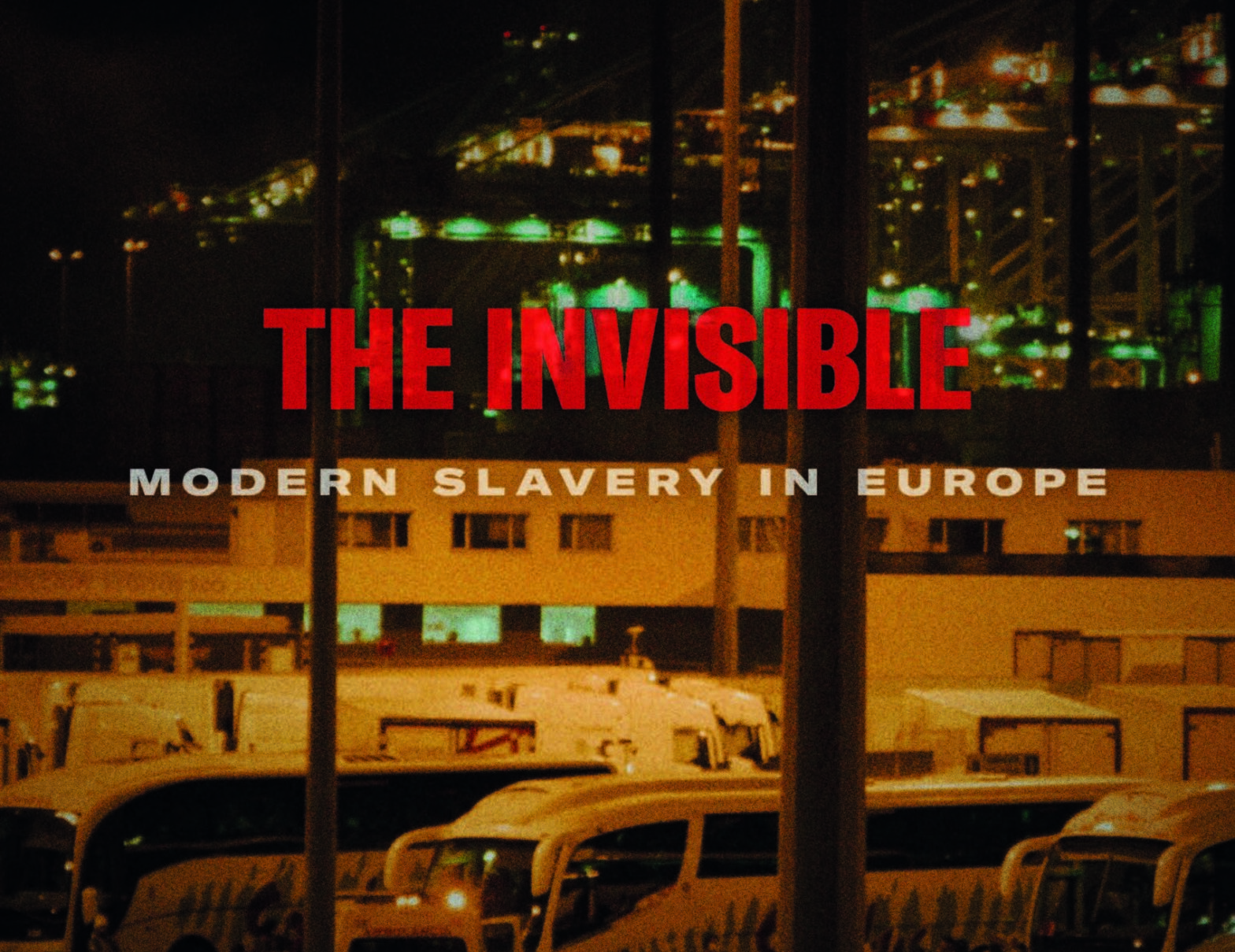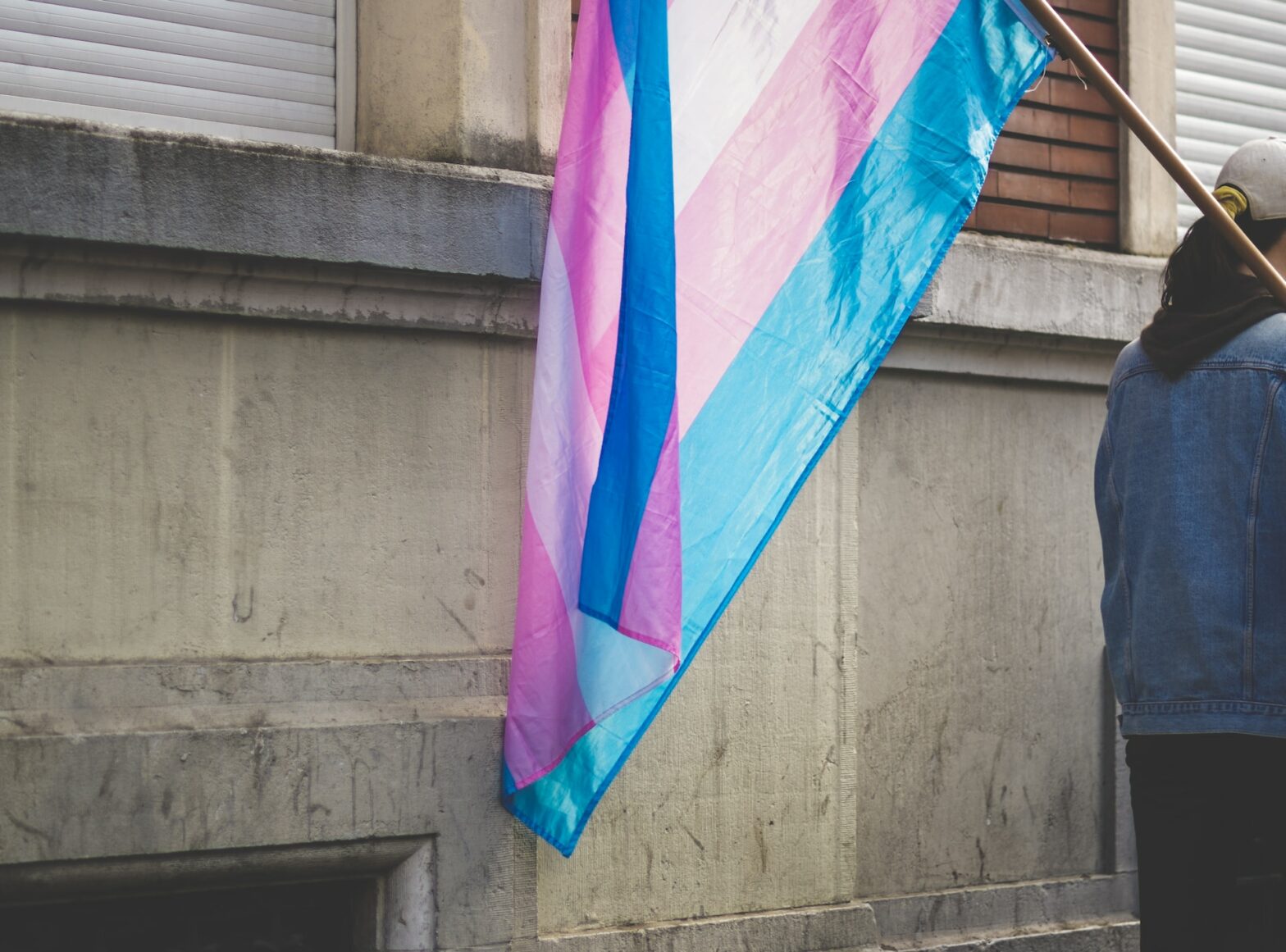Share Twitter Facebook Email Copy URL
The Old Continent – and the European Union in particular – likes to see itself as a model of democracy and human rights. But it is home to a surprising number of stateless people – some from Europe itself, as well as more recent arrivals. The countries of Europe must do more to solve this solvable issue.
At least half a million people in Europe are stateless – maybe more. The true figure is likely to be higher given how difficult it is to count people who are “legally invisible”. The causes of statelessness in Europe vary but resemble those in other parts of the world. The dissolution of the Soviet Union led to large-scale statelessness in the Baltic and Eastern European states. In former Yugoslavia, some people fell through the cracks created by new nationality laws. Though most have since managed to establish their nationality, this is not the case for many Romani people. Throughout Europe, discrimination, legal gaps and the exclusion of minorities still leave people stateless. In recent years, many people from Syria, Iraq and elsewhere have sought safety in Europe. EU data suggest that thousands of people with “unknown” or no nationality have applied for asylum in recent years.
Statelessness is not a new phenomenon. An international legal framework that guarantees protection to stateless people and sets clear rules for preventing statelessness has been in place for at least a generation. All countries in Europe have signed up to some of these core standards. If they had translated this commitment into effective national law, statelessness would have been eradicated in the region by now. But despite a promising start, progress has slowed. Identity politics, migration debates and questions regarding who does and does not belong have intensified in recent years, reducing the political will to resolve an eminently solvable problem.
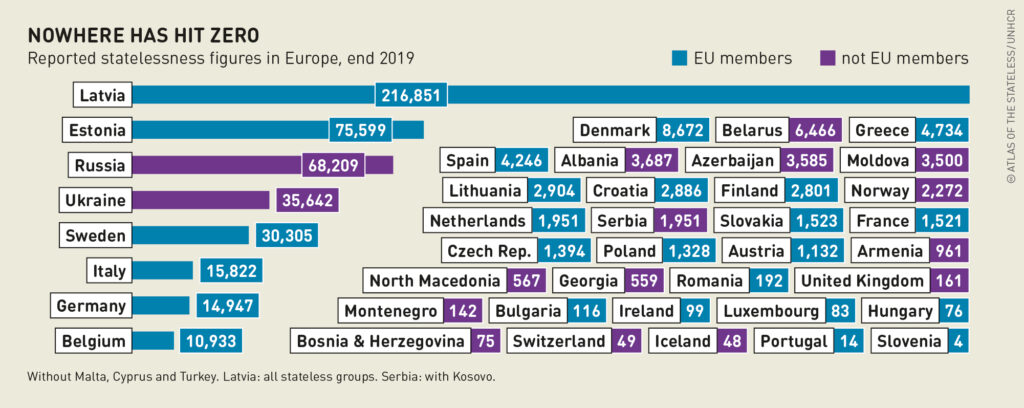
thousands of stateless people, to just a few. But
no one knows how many cases are hidden
Founded in 2012, the European Network on Statelessness was established to coordinate civil society organizations working on this issue, create political space and highlight the need for reform. It works closely with institutions such as the EU, the Council of Europe and the OSCE to increase awareness about nationality rights. The Statelessness Index, launched in 2018, tracks the efforts of European countries to address statelessness, and enables a transnational comparison of laws, policies and practices. It can be used to support advocacy, give officials tools to draft more effective legislation, and provide information to stateless people.
But the stateless themselves are often not involved in the debate. Those working on the statelessness issue may find it difficult to engage with them. The stateless do not fall into a single category: they are of different genders, ages, sexual orientations, socio-economic backgrounds, abilities, languages, religions and ethnicities. The causes and consequences of statelessness can be addressed only if their multiple identities and experiences are taken into account. The failure to do so means that the links between statelessness and racism or patriarchy and other forms of oppression have been poorly understood. This often makes statelessness seem like a “niche” issue.
Nevertheless, progress has been made in the last decade. Seven European states have acceded to the statelessness conventions; nine have reformed their national laws to grant protection to stateless people or prevent statelessness. The EU and the Council of Europe have made political commitments. But much more needs to be done – and quickly – if Europe is to end the scourge of statelessness.
First, children are still being born into statelessness across the continent. In 2015, research by the European Network on Statelessness revealed that half of Europe’s countries have gaps in their laws. Only Norway and Albania have recently introduced reforms, leaving thousands of children in Europe that are still born stateless. Second, only 11 European states have procedures to identify who is stateless on their territory and to grant them rights. Many such people find themselves in legal limbo: they have no way to regularize their stay, and if they move elsewhere they risk detention and destitution. Third, although many thousands of refugees in Europe are stateless, asylum law and policy fail to adequately address the challenges they face. Stateless Journeys, a project supported by the Network, highlights these difficulties and provides information to address them.
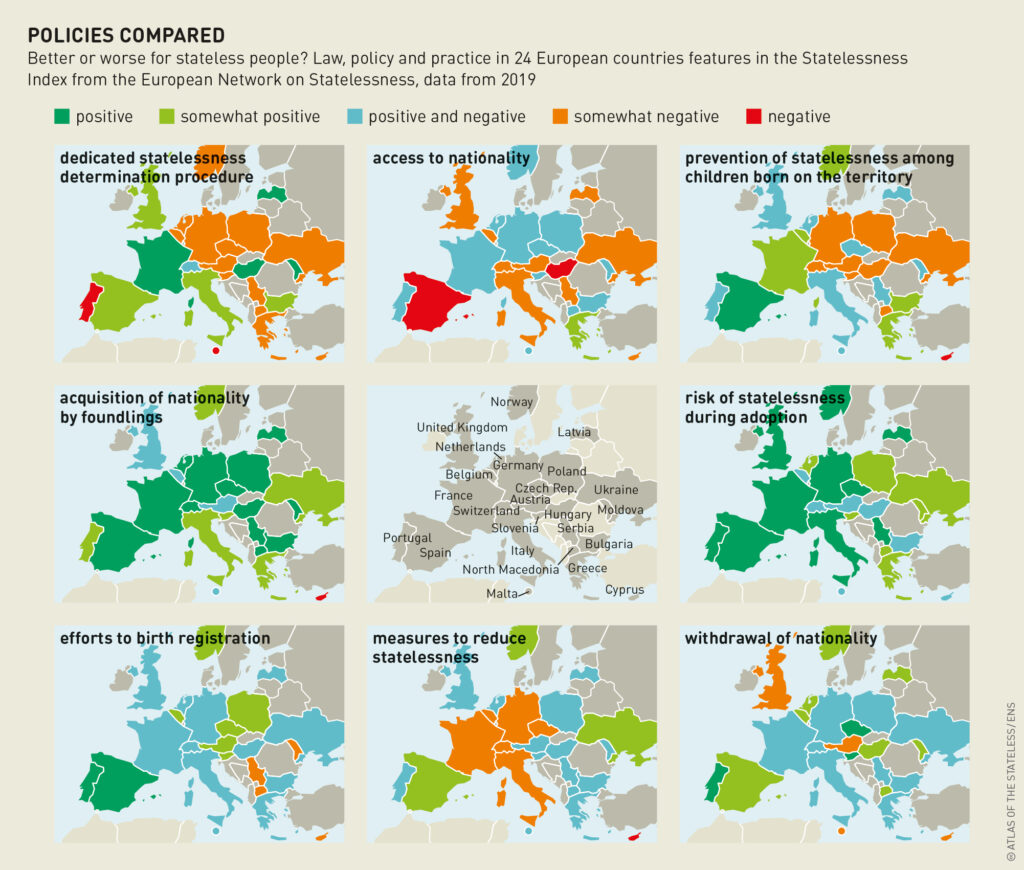
statelessness in Europe, and even in the
European Union, have so far failed
Although state-led initiatives are welcome, they are not enough. Regional bodies must urgently address the issue to catalyse reform and end statelessness. Despite agreements and initiatives by the European Council and Parliament and the Council of Europe, the continent still lacks a common approach to statelessness akin to regional strategies adopted in the Americas and West Africa. The next phase of UNHCR’s IBelong campaign aims to galvanize action.
Ending statelessness in Europe will require new coalitions that include stateless people, and a close monitoring of law, policy and practice to hold governments to account. Civil society is pushing for a Europe where everyone has the right to a nationality. This is a vital reflection of the continent’s values of freedom, democracy, equality, rule of law and human rights.
This contribution is licensed under the following copyright licence: CC-BY 4.0
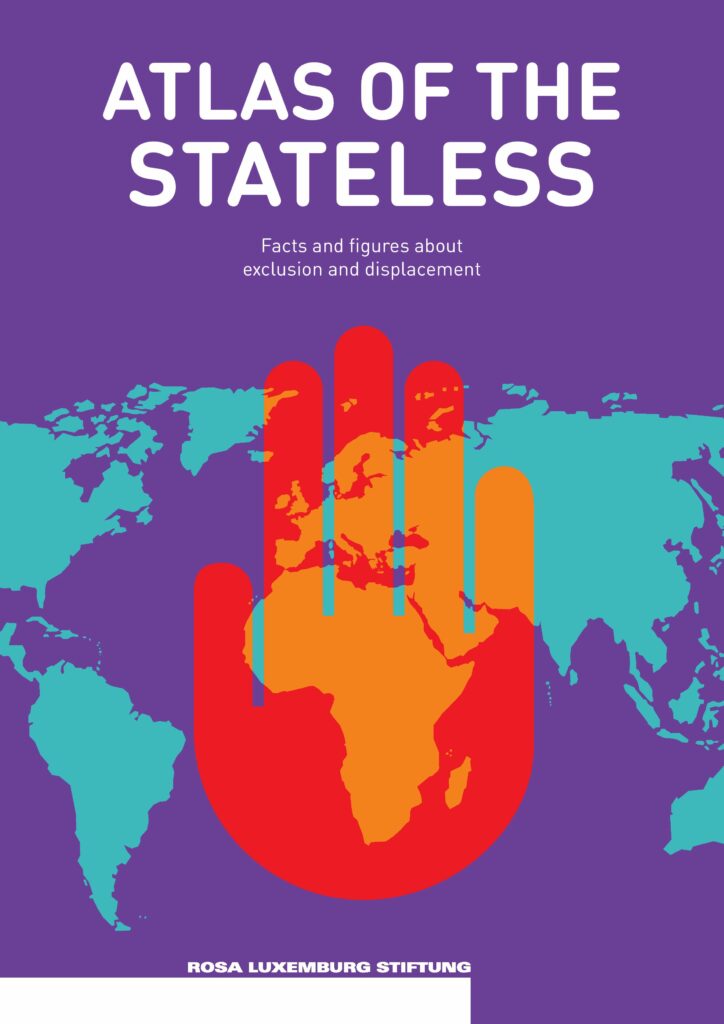
The article was published in the Atlas of the Stateless in English, French, and German.

